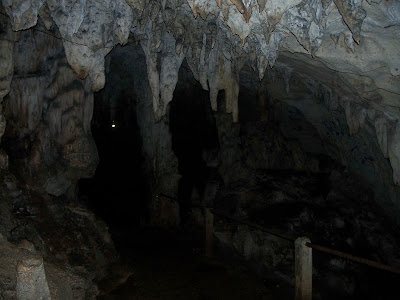1. Chocolate Hills
The Chocolate Hills are probably Bohol's most famous tourist attraction. The Chocolate Hills is an unusual geological formation in Bohol, Philippines. It is composed of around 1,268 perfectly cone-shaped hills of about the same size, spread over an area of more than 50 square kilometres (20 sq mi). They are covered in green grass that turns brown during the dry season, hence the name.
2. Tarsier
The Philippine tarsier, (Tarsius syrichta) is very peculiar small animal. In fact it is one of the smallest known primates, no larger than a adult men's hand. Mostly active at night, it lives on a diet of insects. Folk traditions sometimes has it that tarsiers eat charcoal, but actually they retrieve the insects from (sometimes burned) wood. It can be found in the islands of Samar, Leyte, Bohol, and Mindanao in the Philippines.
3. Blood Compact Monument
The Sandugo was a blood compact, performed in the island of Bohol in the Philippines, between the Spanish explorer Miguel Lopez de Legazpi, and Datu Sikatuna the chieftain of Bohol on March 16, 1565, to seal their friendship as part of the tribal tradition. This is considered as the first treaty of friendship between the Spaniards, and Filipinos. "Sandugo" is a Visayan word which means "one blood".
4. Loboc Floating Restaurant
One of the popular tourist activities in the province of Bohol is cruising down Loboc River while buffet dining on a floating restaurant. Emerald green because of the algae, Loboc River is 12 meters wide and 4 meters deep (I don't know how long it is). You don't cruise down the whole river, but the ride is around 40 minutes. At the turning point, you'll find three mini waterfalls and a band of musicians on a floating raft playing folk tunes for the tourists.
5. Hinagdanan Cave
Hinagdanan Cave is a cave on Panglao Island, in Bohol Province, in the Philippines. It is a naturally lighted cavern with a deep lagoon and many large stalactites and stalagmites.
The cave is lit by sunlight which filters through holes in the ceiling. The underground lake is a popular swimming spot, but it has been known to test for high levels of various pollutants, since it is fed by ground runoff.







No comments:
Post a Comment